| Author: | |
| Website: | |
| Page title: | |
| URL: | |
| Published: | |
| Last revised: | |
| Accessed: |
The topology of a network describes the logical layout of the network, i.e. the way in which network devices are connected together via the transmission medium. The topology usually (though not always) describes the way the devices are connected together electronically. A network having a ring topology in terms of the way in which devices are connected electronically, for example, will usually be laid out physically using a star topology. A combination of different topologies of this kind is called a hybrid topology. The network topologies that are found in computer networks are:
This network configuration is based on a single network cable (sometimes called a backbone or segment) to which all devices are attached. A device on a bus network can transmit to any other device at any time, so collisions can and do occur, and some form of arbitration must be implemented to deal with them. Data frames are usually addressed to a specific destination device using that device' MAC address. Although data frames will propagate in both directions along the bus, and will thus be received by all devices on the network, only the device to which the data is addressed will actually read it. The cable segment must be correctly terminated at each end to prevent signal reflection. The bus topology, illustrated below, is rarely employed in modern LANs of any size, although backbone cables may be used to link together a number of smaller network segments.
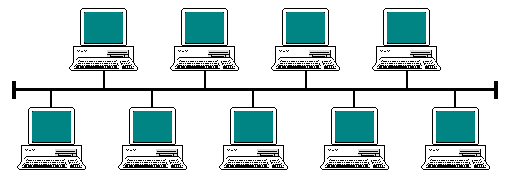
The bus topology
In a ring network, data frames are transmitted from device to device around a closed loop in one direction only. Each device in the loop communicates directly only with the device that transmits to it, and the device that it transmits to. Each device in the loop is responsible for relaying received data frames to the next device in the loop, often regenerating the signal before passing it on. Ring networks control medium access using a system known as token passing, in which a small data frame known as a token is transmitted around the ring from device to device. A device with data to transmit must wait until it receives the token and, if the token is not already in use, may then add the data and control information to the token, effectively turning it into a data frame. When the acknowledged data frame is received back from the destination device, the token is released for use by other stations.
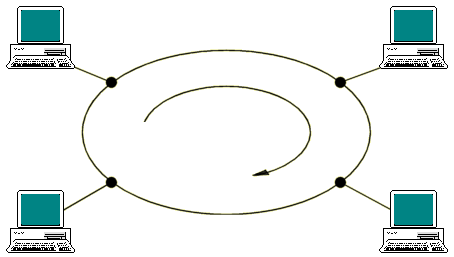
The ring topology
In a star topology, each device is connected to a wiring centre of some kind that is responsible for relaying data to other devices on the network segment. Most modern networks use some variation of the star topology, even if electronically they behave like a bus or a ring. One big advantage of star networks is that the ease with which additional devices can be added to the network, facilitating network expansion. Because each device has its own dedicated connection to the wiring centre, problems are easier to isolate, and a break in a cable affects only one node. If the central device develops a fault, of course, all nodes may be affected.
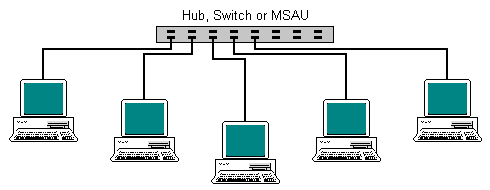
The star topology
This is essentially a branching version of the bus topology. Each branch must be terminated to prevent signal reflection, and data frames are propagated to all devices attached to the network.
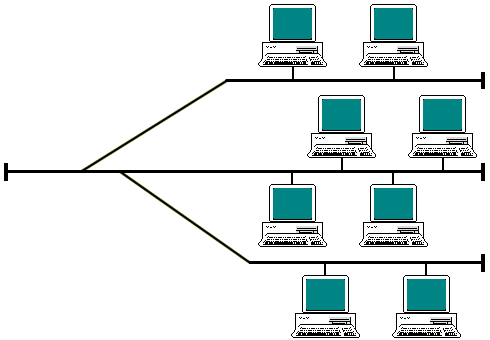
The tree topology
In a mesh topology, each device is connected to several other devices. Reliability is increased because there are alternative routes by which data frames can reach their destination in the event of one link failing. The main disadvantage is the number of connections required, with each device added to the network requiring several additional connections. If every device is connected to every other device on the network, the total number of connections required can be calculated using the following formula:
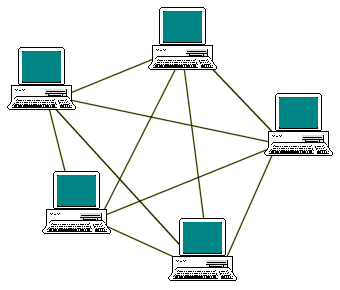
The mesh topology
In this topology configuration, a bus is used to connect a number of network segments, each of which employs a star topology. This hybrid topology has been widely used in the past in LANS, and provides an easy way of extending the network.
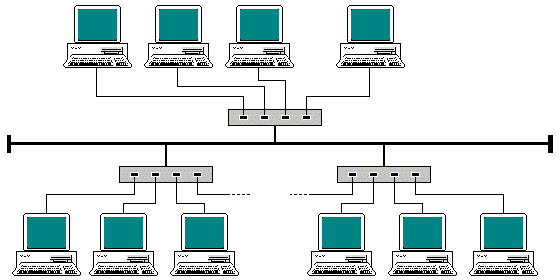
The star-bus topology
Electronically, this configuration is a ring network, but with the nodes star-wired to one or more wiring centres. This configuration is commonly used in Token Ring LANS, and provides an easy way of extending a ring network. Additional wiring centres can be added to the network to allow more network devices to be added, but note that each wiring centre has a ring-out (RO) port that is connected to the ring-in port of the next wiring centre in the chain. The last wiring centre in the chain will be connected, via its ring-out port, back to the ring-in port of the first wiring centre.
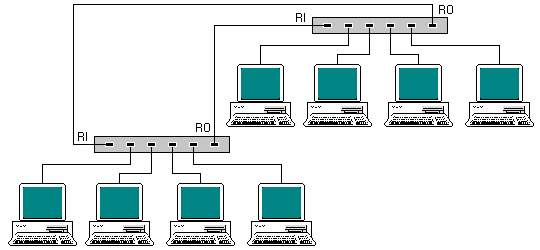
The star-ring topology